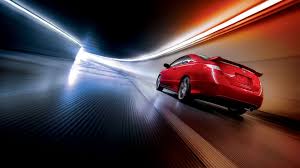Salam (May Allah Bless You). Today I am bringing you guys something pretty basic but I will write down some equations necessary for not only exams but for some practical demonstrations.
Energy
Energy is ability to do work. It is not easy to define energy but this is the closest definition to it. There are various forms of energy which act differently. Such as there is; heat energy, light energy, gravitational potential energy, kinetic energy, sound energy, magnetic energy, electrical energy, nuclear energy etc.
Gravitational Potential Energy
If an object is raised above the ground and you let go of it, it will be pulled down to the ground by the force of gravity which attracts  all objects. This supports the fact that the heavier an object is and the higher it is raised above the ground the greater the amount of gravitational potential energy it contains. When it falls to the ground, it loses its gravitational potential energy. This can be shown through the equation:
all objects. This supports the fact that the heavier an object is and the higher it is raised above the ground the greater the amount of gravitational potential energy it contains. When it falls to the ground, it loses its gravitational potential energy. This can be shown through the equation:
Ep = mgh ; Gravitational potential energy = mass (m) x gravity (g) x height above ground (h).
The gravity will always be 10 N/kg because this is Earth’s gravitational force, although in exams its value will be given to you.
Chemical energy
 Potential energy can be stored in some ways. One type of potential energy is chemical energy. Energy is stored and is slowly utilized when a group of atoms or molecules group together to convert the energy into other form. The energy can be utilized much more quickly depending on the source of energy, such as, a fossil fuel converts its chemical energy into heat energy very quickly when burned.
Potential energy can be stored in some ways. One type of potential energy is chemical energy. Energy is stored and is slowly utilized when a group of atoms or molecules group together to convert the energy into other form. The energy can be utilized much more quickly depending on the source of energy, such as, a fossil fuel converts its chemical energy into heat energy very quickly when burned.
Kinetic Energy
Kinetic energy is all about movement. The greater the velocity of a moving object the greater kinetic energy it has. This can be shown by the equation:
Ek = 1/2 mv^2
M is the mass of the object which will be in Kg
V is velocity. As the equation shows, the kinetic energy of an object is the double of the velocity of the object. If the velocity doubles, the kinetic energy quadruples.
Energy conversion
In different cases, energy tends to be converted into different forms. One good example is that if you throw a ball into the sky, it will move far above ground, meaning it will gain a lot of gravitational potential energy. The kinetic energy will also rise at the beginning of the throw but as it rises the kinetic energy decreases as it is converted into the gravitational potential energy. Just as the kinetic energy is converted, the gravitational potential energy also starts to convert into kinetic  energy slowly and it gradually falls until its velocity doubles.
energy slowly and it gradually falls until its velocity doubles.
The ball does tends to bounce as it touches the ground but each time it touches the ground, the height it gains while soaring into sky lessens during each bounce. This is because some of the energy is lost, also, friction with the gas molecules present in air causes the ball to slow down. If the ball did not lose any energy after each bounce it would keep on bouncing to the same height forever.
Energy transforms into another form. It is neither created nor destroyed. So energy tends to transform from one form to another. Some devices convert one form of energy into 2 or 3 more forms. Such as a television, transforms electrical energy into sound, light and heat energy. Other devices convert energy into one form only, such as an iron converts electrical energy into heat energy only.
Efficiency
Efficiency is the amount of energy used excluding the amount of energy wasted. Nothing is a 100% efficient, therefore, many devices use only small amount of useful energy. Such as a bulb receiving 100 Joules (J) of energy, it converts only 10 J of it to light energy which is the only purpose of the bulb for providing light. It converts 90 J of the energy to heat energy. This 90 J is wasted as heat energy is useless in the case of the bulb. We can calculate the efficiency of a device by using the equation;
Efficiency = Useful Energy x 100% / Total energy input.
Efficiency is mainly calculated in percentage. One thing that should be noted here is that the amount of energy input is the exactly equal to energy output. Since energy is not destroyed or broken down, the energy input equals the energy output, it doesn’t matter in which form or in how many number of forms is the input energy converted into, the output will remain equal to input.
Work
In science work means amount of force used to move an object. Such as a crane lifting up an object is actually working as it pulls the object upwards and around. But when the crane is stationary even though it is holding the object in mid-air, it is not working as the object is not being moved. Therefore the equation for work is;
W = F x s
W is work which is expressed in Joules (J)
F is force and will be expressed in Newtons (N)
s is the distance the object moved and is expressed in meters (m).
Power
Power is calculation of amount of work done during an interval of time. It is calculated by the equation;
P = W/t
W is work which is expressed as joules
t is time which is expressed as seconds
P is power which will be expressed in Watts
Sources of Energy
Energy is released from a source. This can be renewable and nonrenewable. Non renewable energy sources releases energy more quickly than renewable sources and runs out. Renewable sources, however, do not run out. These sources of energy are mainly used to generate electrical energy to power modern devices.
Non renewable resources
These include the fossil fuels, crude oil, coal and natural gas. These are combusted to releases heat energy and are more commonly used in thermal power stations which generate electricity from these fuels. The disadvantage for using fossil fuels are:
- Fossil Fuels are in limited amount and are being used up more than they can be formed by the Earth. These will run out. The world will have to adopt to other
 sources of energy which might not be much helpful as the fossil fuels are.
sources of energy which might not be much helpful as the fossil fuels are. - Extracting fossil fuels though mining and quarrying results in damage to environment.
- Fossil Fuels release a lot pollutants into the air during combustion causing environmental problems such as greenhouse effect and acid rain.
Nuclear energy is developed from the source uranium. This is also a non renewable source of energy. It is not a fossil fuel. It will remain a very helpful source of energy for a long time, longer than fossil fuels, and also does not damages the environment unless such power stations are handled with carelessness. If such stations are to be dismantled during its last stages, it is very difficult as the radioactivity can spread across the environment damaging not only the environment but also the organisms passing though such radioactive zones.
Renewable sources
Renewable sources are wind, light, and water. The light from the sun are used to convert the light energy to electrical energy with the help of silicon chips in the  solar panels. The dams and barriers formed on a river makes an artificial lake. The water flows through the pipes in the dams and turns the turbines forming electricity. The water is also used as a source of energy in tidal form of power generation. There is a barrier formed between two tides. The water from the higher tide is flowed through a pipe containing a turbine. The turbine is moved causing the electrical energy to be formed and the water flows into the lower tide. Wind mills are used for utilizing wind. The kinetic energy from wind moves the turbine from the wind mills producing electrical energy.
solar panels. The dams and barriers formed on a river makes an artificial lake. The water flows through the pipes in the dams and turns the turbines forming electricity. The water is also used as a source of energy in tidal form of power generation. There is a barrier formed between two tides. The water from the higher tide is flowed through a pipe containing a turbine. The turbine is moved causing the electrical energy to be formed and the water flows into the lower tide. Wind mills are used for utilizing wind. The kinetic energy from wind moves the turbine from the wind mills producing electrical energy.
These forms of energy can be useful for powering a small area or a single house. But these also limit the amount of electrical energy produced.
Its advantages are:
- These sources will not run out.
- Generating electrical energy from such sources is cheaper than non-renewable sources.
- It causes little amount of damage to environment.
Disadvantages are:
- Wind and water sources are useless with low kinetic energy as they need to turn the turbines while the sunlight tends to be useful during day rather than at night.
- The sources formed are all dependent on nature. They are not available all the time.
- Some power utilizing techniques such as dams and barriers, are useless in countries where there are no fast flowing rivers.
- These not only use up land but also destroy the scenic beauty of the land. Suppose a 100 windmills are used to power half a city, this means it covers more land than needed. Instead of using up land, one nuclear power station can power just as much area as more than 1000s of windmills can.
